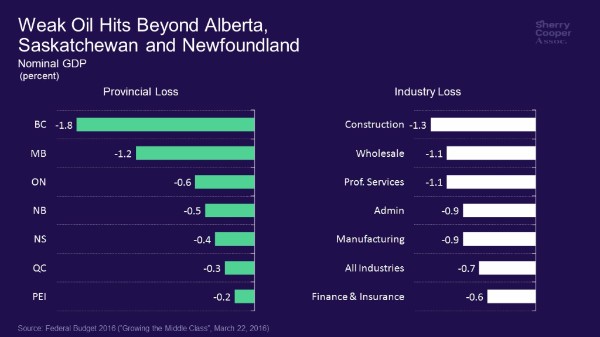Articles
Posted on April 1, 2016
Oil’s Death Nell Without Pipeline
Canada Has Only One Customer for Oil…And It’s Not Buying

Canadian oil is landlocked. We have only one customer–the U.S.–and that customer is now producing more oil than it needs. What’s more, the U.S. considers Canadian oil to be dirty oil and, therefore, would prefer not to import it. Hence the downfall of the Keystone pipeline.
Asia is the fastest growing region in the world. Why not create the infrastructure needed to meet Asian demand for oil?
The world is awash in oil as everyday supply stockpiles continue to mount. The Saudis have successfully played a game of chicken. Its oil is the cheapest to produce, so it can withstand today’s low oil prices far better than countries like Canada where oil extraction is very expensive. U.S. shale oil production has slowed, but only moderately as U.S. oil prices–West Texas Intermediate (WTI) crude prices–are far higher than the price paid to Canadian oil sands producers, Western Canada Select (WCS). The WCS price is currently just over US$17.00 a barrel compared to over US$38.00 for WTI crude. Oil demand has fallen sharply with the slowdown in the emerging economies since late 2014 led by China. The oil price shock in Canada has not only thrown Alberta and Newfoundland into recession, but, as shown in the chart below from last week’s budget documents, it has dampened growth in the rest of the country and in many industries as well.
Oil production has been slow to respond to lower prices because companies require cash flow to cover the interest payments on their debt. According to Jaime Caruana of the Bank for International Settlements, loans and bonds outstanding for the oil and gas industry had almost tripled between 2006 and 2014 to $3 trillion.

Excess supply might well dissipate in time as new projects are shelved, but forces are already afoot to reduce fossil fuel consumption in advanced economies including Canada and the U.S.. Any meaningful price increases would only accelerate the process of reducing carbon footprints.
Janet Yellen, the Chair of the Federal Reserve, said this week that she would be cautious in raising interest rates again given the weakness in emerging economies. According to Bloomberg Business News, “The explosion of borrowing in emerging markets, especially when denominated in U.S. dollars, is a ticking time bomb for the global economy. When rates start rising, pulling the value of the dollar up with them, the pressure on not just oil companies but all heavy borrowers in developing markets will intensify. And it just so happens that the developing world accounts for all of the projected growth in oil demand over the next five years, based on the International Energy Agency’s ( IEA’s) numbers.”
Which brings us back to Canada. All of the growth in oil demand in the next five years will be in the emerging economies, yet Canada cannot export to these countries because our oil is landlocked in North America. Without the Gateway Pipeline going west or the Energy East Pipeline going in the other direction, Canadian oil will not reach the fastest growing regions of the world. The oil companies themselves might shift production elsewhere, but our own natural resource would be under-utilized, killing the largest contributor to growth from 2002 to 2014. The ramifications to the economy would be long lasting and extensive.
Shouldn’t one of the government’s most important infrastructure programs be the creation of the Gateway Pipeline?